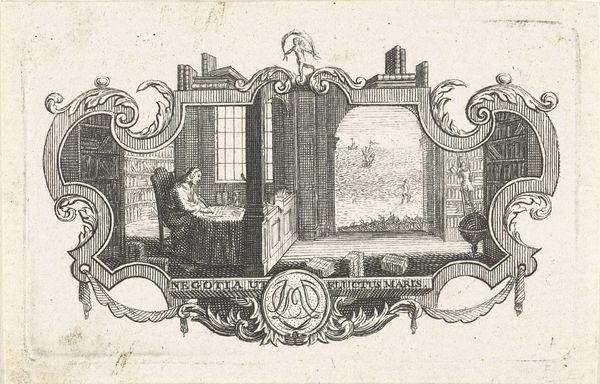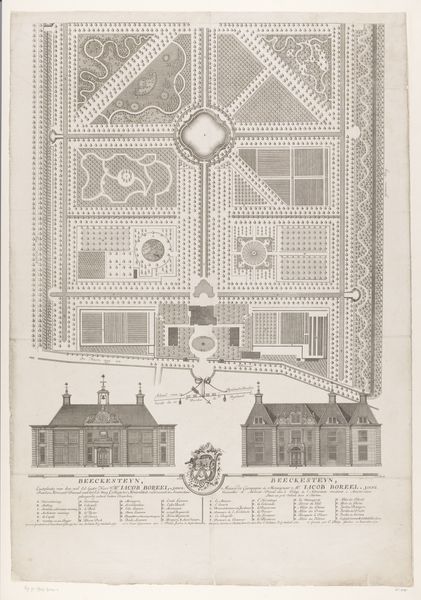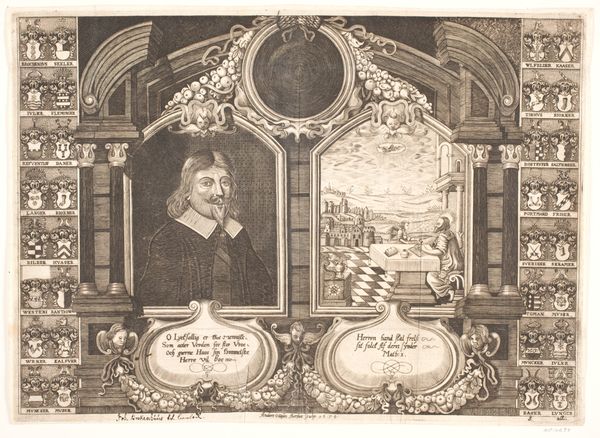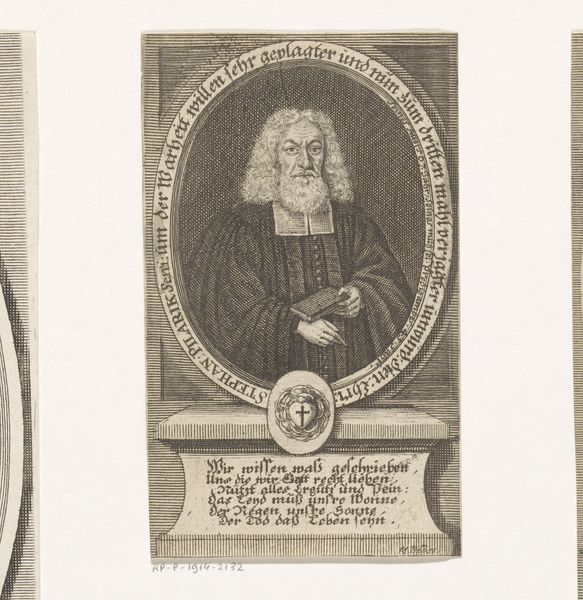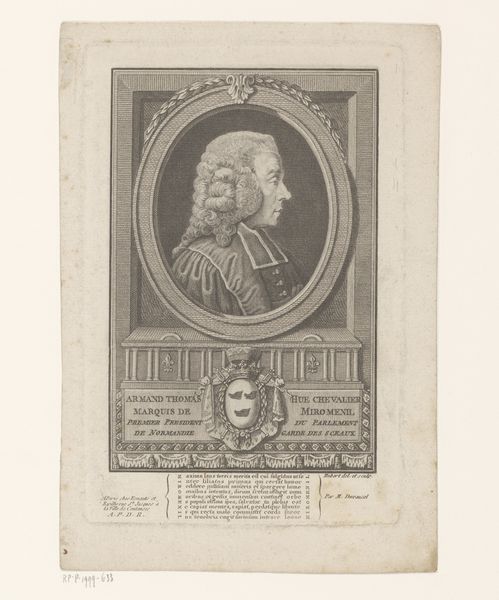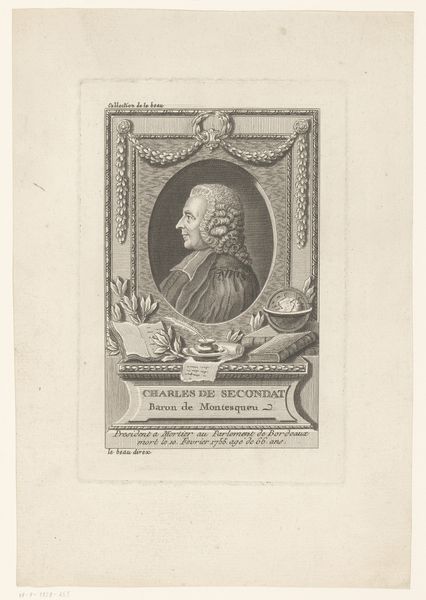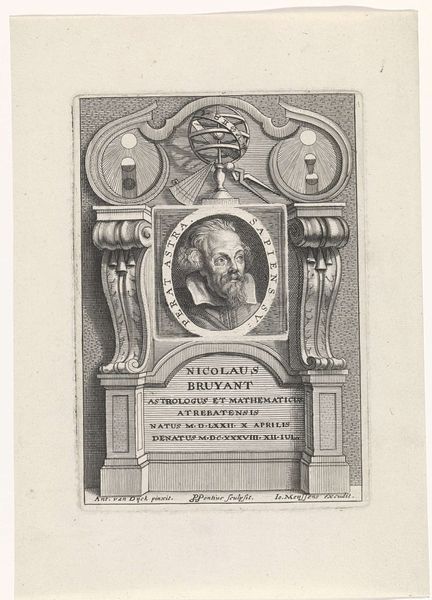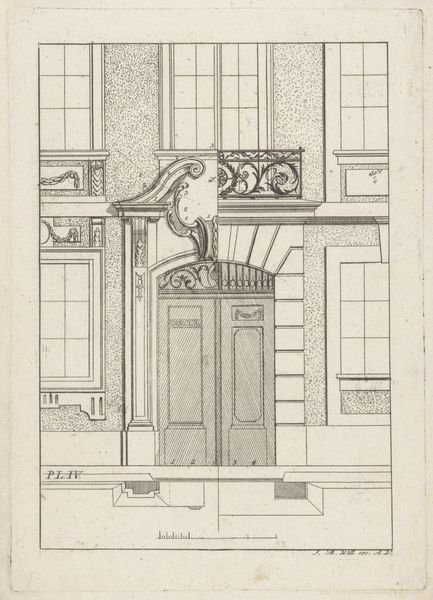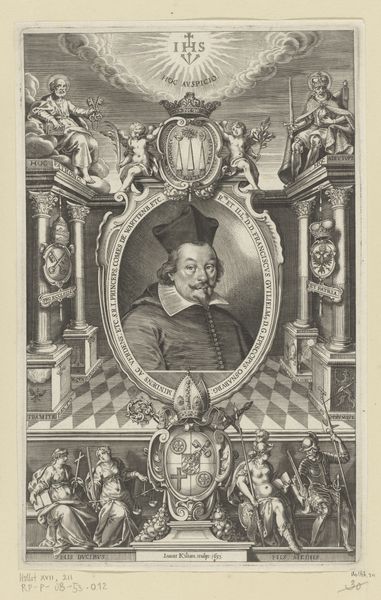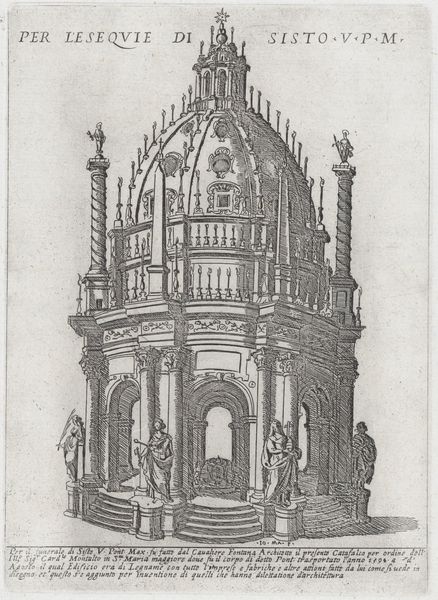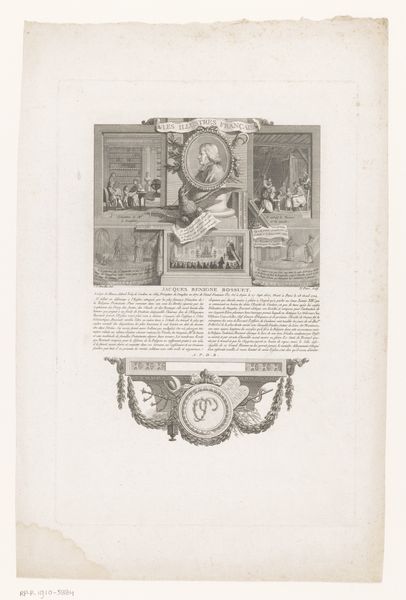
Dimensions: height 255 mm, width 149 mm
Copyright: Rijks Museum: Open Domain
Curator: Hendrik van Hilten created this print, "Woonhuis op de Haarlemmerdijk te Amsterdam van Hendrik Busserus," in 1773, using engraving techniques to depict a cityscape. Editor: It feels like stumbling upon a hidden document, a map leading to some forgotten treasure or secret. The lines are so precise, and there's this fascinating contrast between the architectural backdrop and the framed portrait. Curator: Exactly, it's a fascinating composition that merges architectural study with portraiture. We see the house on the Haarlemmerdijk, meticulously rendered, along with a portrait of Hendrik Busserus. Consider how the act of documenting architecture in prints like these shaped how cities were perceived. Editor: I am especially intrigued by that portrait of Busserus placed askew in front of the houses—almost pasted onto it like some hastily applied memory. There is an endearing, homespun feel about it that draws me in. What's the story with its slightly odd tilt? Curator: Good question. Perhaps, by setting it at an angle, van Hilten signals the individual is somehow separate or superimposed, conceptually, onto the space. Editor: Right. It speaks to me of a more deeply personal or domestic dimension; that it’s not only about structures and streets but also about how we remember people through places and spaces. Curator: The level of detail—look at the texture in the man's wig! And observe how those textures contrast so sharply with the architecture, even to the brickwork and roof tiling of the houses behind him. The print exemplifies Baroque precision. It shows us not just a place but a moment in time. Editor: Thinking about this reminds me of how often memory and imagination take such odd angles and views, too. Thanks, Hilten, you’ve sparked something in me today, as though this whole composition is saying “remember what you choose, and how it chooses to appear in your life”. Curator: An artful consideration indeed. This print grants us a unique glimpse into Amsterdam’s architectural past, yes, but more so how individuals interacted with and sought to monumentalize aspects of their physical surroundings.
Comments
No comments
Be the first to comment and join the conversation on the ultimate creative platform.
